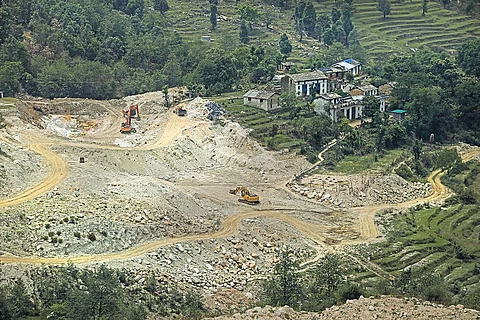

Bageshwar district of Uttarakhand has vast deposits of khadia or soapstone—a soft silicate rock used in manufacturing paints, paper and cosmetics. The mineral has been mined in the district for decades, but mining operations have begun to show severe environmental impact in recent years.
“The soapstone mines have become a curse and we will lose the entire village. Many houses in the village have developed cracks,” says Kesar Singh of Talla Dhapoli village. “It is a matter of time before the land sinks,” he adds. Village residents say that earlier the mining was done by hand and was a source of employment to local people. But the arrival of big companies led to mechanisation and intensification of the mining activity.
An estimated 140 soapstone mines operate in the district. Their activities are reported to have resulted in land subsidence in adjoining villages. These include Talla Dhapoli, Kandekanyal and Dabti Vijaypur, where houses, roads and fields have developed cracks. Kanda and Reema valleys are said to be the most affected.
In September, media reports noted that the National Green Tribunal has taken suo motu cognisance of the matter and asked all stakeholders to file a response a week before the next hearing scheduled for December 11. The High Court of Uttarakhand, while hearing a public interest petition that month, also asked the state government to file a response in four weeks to reports of soapstone mining causing cracks in the buildings and lands across the district. Down To Earth travels to Bageshwar to capture the impacts of soapstone mining.
This was first published in the 1-15 November, 2024 print edition of Down To Earth